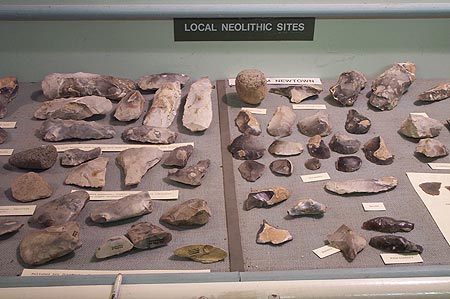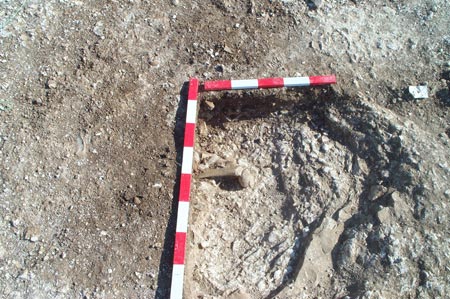Today was the start of week three which heralded the arrival of a new group of students – this time from Southampton University. Two people from the first week also came back for some more training because they had enjoyed it so much before (or else were gluttons for punishment!).
As always the day began with an informal introduction to the site of Down Farm and its surrounding landscape. This was followed by a quick summary of the background to field archaeology, and the principles of excavation and recording. Dr. Martin Green then gave everyone a pleasant break from complex methodology with a most interesting and thought-provoking tour around his farm. He gave a whistle-stop tour from the Mesolithic to the Iron Age and Roman period. The students visited a deep pit he excavated in the 1980s which contained evidence from over three millennia within its deposits and viewed the Dorset cursus from a vantage point in one of his fields. Martin brought the past to life with his talk about the longest and most monumental Neolithic monument in Britain and how its alignment relates to the winter solstice and possible processions along its banks.
After a coffee-break Martin showed us all around about his wonderful museum which is replete with all the archaeological finds (particularly flint!) from three decades of fieldwalking and excavation. Almost every artefact in Martin’s museum has a really interesting story attached to it and the students learnt a great deal about the prehistoric past of Cranborne Chase.

Since a very large number of features were exposed last week when hoeing and brushing back, there were still more than enough post-holes left to excavate this week without the new students having to clear a new area! Possibly the students were secretly relieved by this and after lunch they were glad to be able to start excavating these post-holes and quarry hollows straight away. Again some of the holes have finds in them including animal bone and struck and burnt flint, while the quarry hollows have small sherds of pottery. Hopefully excavating these posts will help us characterise the nature of these structures in this part of the site more clearly!
